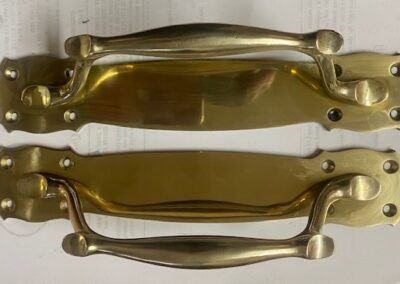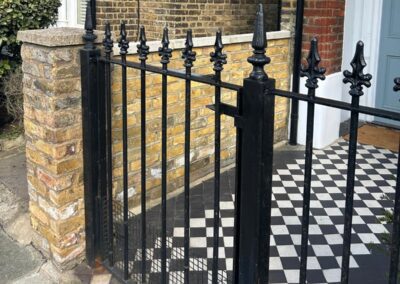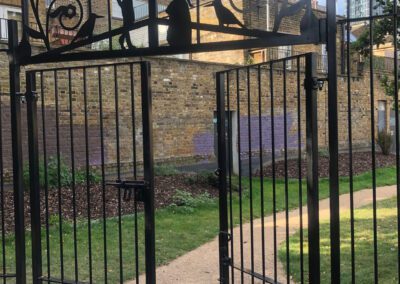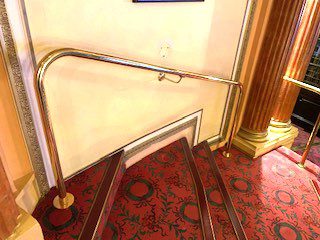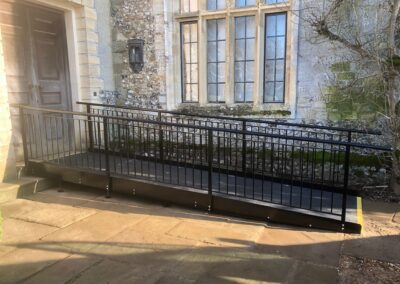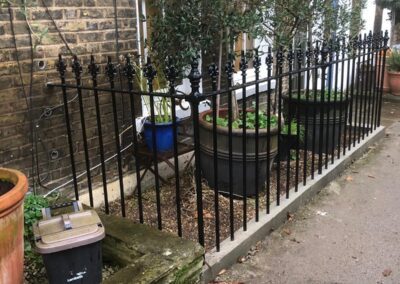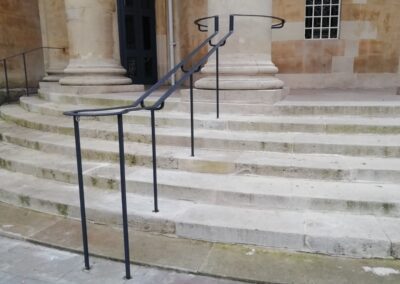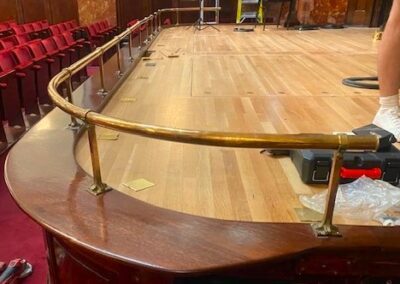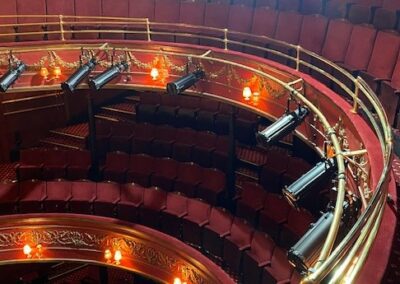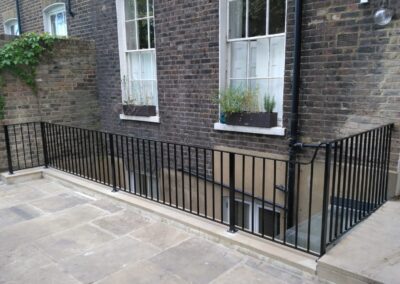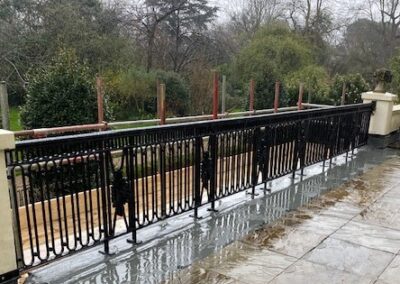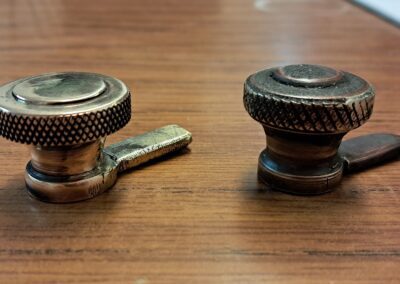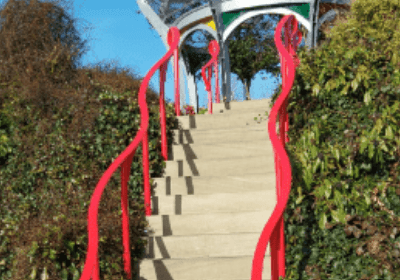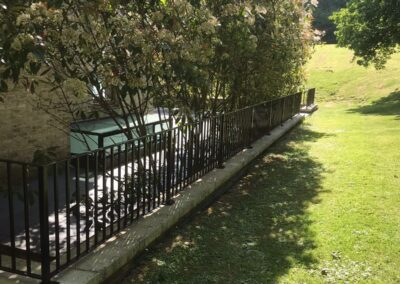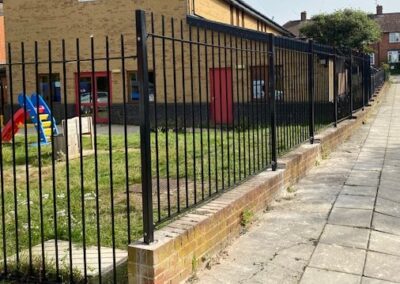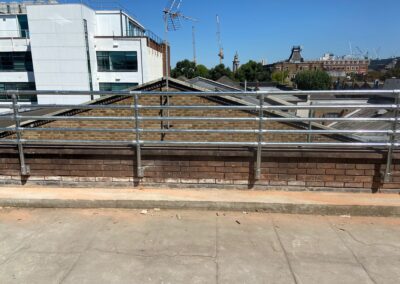Wrought Iron Railings
Our experience in the fabrication, installation and repair of wrought iron railings and gates is second to none.
We’ve carried out wrought iron railing work for clients ranging from the Royal Household Property Section and the Parliamentary Estates Directorate to the Royal Parks, the National Trust, London museums, for schools, colleges and private clients in London and Essex. Let us provide the same quality of work for you.
Wrought Iron Railing Projects
Send us your metalwork enquiry and we will call you back to discuss your project.
[contact-form-7 id=”11625″ title=”Quick Contact”]
Wrought Iron Railing Finials
Sometimes called railheads, finials are the chief component that make railings distinctive. The most common are shaped like spears, balls, diamonds or fleur de lys but there are hundreds of designs to choose from. They are usually painted black or gold, but we can paint them any colour you like.
Vertical Railing Bars for Wrought Iron Railing
Most railing bars are plain, but they can be twisted or much more ornate and incorporate decorative panels if you wish.
Handy Wrought Iron Railing Tips and Information
How to prevent your wrought iron railings rusting
Have your wrought iron railings painted
This is the easiest and cheapest option but, if this is the only coating it’s given, you should re-paint the wrought iron every 5 years to prevent rust developing. We can paint your wrought iron for you – just ask for a quote.
Have your wrought iron railings powder-coated
This means the wrought iron railing is sprayed then baked dry so it forms a ‘skin’ around the metal. The metal needs to be clean and smooth before it’s powder-coated, so any flaking metal, oil or dirt must be removed beforehand. Have your wrought iron galvanising and powder-coated This means the gates are plated with zinc, to prevent rust, then powder-coated black or in the colour of your choice to provide an attractive long-lasting finish that won’t need painting for a great number of years.
Inspect and maintain your wrought iron railings
Check your wrought iron over at least once a year. Remove any vegetation that’s encroaching on it. It there’s any flaky paint or rust, follow the DIY procedure for restoring wrought iron outlined below. Lubricate any hinges by filling the grease nipples on the bottom hinge sockets and lightly oiling the pins inside the top strap hinges. Lubricate any shoot bolts. Lubricate any locks by lightly oiling the top of the protruding locking bolt and then sliding it in and out a few times to disperse the oil.
How to restore rusted wrought iron railings
1) The DIY option
Rub down If your wrought iron has been in place for a while, and you don’t want to take it to be sand or shot blasted, either remove old rust with a brush, followed by sandpaper, if necessary, or use a rust solvent. Whichever way you do it, make sure you reach into every corner or crevice or your hard work will be wasted. Clean Once you’ve removed the rust, you have to make sure the metal is grease-free and clean or the paint won’t adhere to it properly. Wash it with hot soapy water, and give it time to dry thoroughly. Paint When your wrought iron is smooth, clean and dry paint it with suitable primer and top coat.
2. Call in professionals
Experts, like us, who can advise you on the best way to restore your wrought iron. We will usually recommend that any section that has extensive rust be removed and shot blasted. Unfortunately, this often reveals further damage hidden by layers of paint, but until this is done it’s impossible for anyone to tell the true condition of the metal. The damaged metal can then be repaired (or replaced with new sections that have been cast to match the original), powder-coated, galvanised and re-installed so that they look like new.
What is wrought iron?
Wrought iron was the material traditionally used for decorative gates and railings. Today, it’s no longer produced on a commercial scale and, although many products, such as railings, gates, handrails etc. are described as wrought iron, they are usually made of mild steel which is cheaper and stronger than wrought iron. Even though they are not made of wrought iron, these products can legitimately be described as such because they have been ‘wrought’, that is worked on by hand.
At Waltham Forest Engineering, we’re skilled at producing wrought iron railings, handrails, gates, platforms, ramps and walkways that are actually made of mild steel. We’re also experienced in repairing and restoring wrought iron railings, gates and handrails or replacing sections so that they are indistinguishable from the rest. We have done this for the Royal Household Property Section, the Parliamentary Estates Directorate and the National Trust – and the results speak for themselves.
